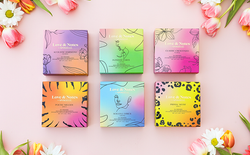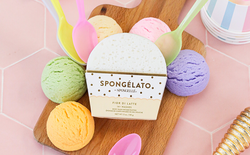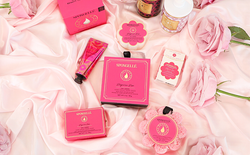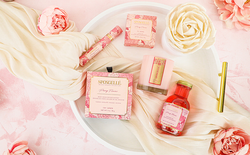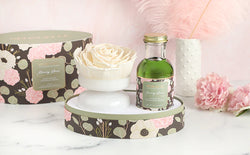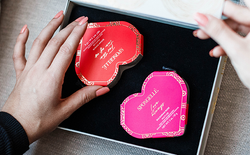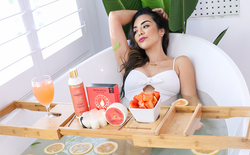There was likely a time in your life that you thought all skin was created equally. You probably felt like any product would work to cleanse and moisturize your skin, and never considered how important it was to understand your skin’s unique needs. While it may be true that all skin is equally beautiful, the skin type for each person does vary.
Using products that are not designed for your skin type can cause unnecessary skin challenges. For instance, if you were to use a moisturizer that was heavier than your skin requires, it could result in a decrease in the amount of oil your body produces naturally, which would then result in even more dryness and flakiness. If you have sensitive skin (such as rosacea) and use products with fragrance, they could irritate your skin even more.
Some of the most common skin types are sensitive, oily, combination, normal, and dry. As our body’s largest organ, the skin has a huge job to do to protect us. Taking the time to understand how to take care of our skin is the least we can do.
The Quest to Finding Your Skin Type
With the most common skin types in mind, how do you determine which category you fall into?
There are a couple of methods that can help you get to the bottom of it.
30 Minute Time Test
If you have a little extra time on your hands, this method allows you to evaluate your skin in the comfort of your home. With almost zero prep, you will have a good idea of how your skin is behaving in about 30 minutes. All you need is a cleanser that is gentle on your skin. This is not one of those times you want to use new skin care products or products with harsh chemicals.
You will begin by washing your face with the cleansing agent, and pat dry gently. Set a timer for 30 minutes. If your skin is oily, oil production will increase all over. If you are on the dry side, your skin may be feeling scaly, flaky, or tight with dry areas.
For combination skin, you may have an oily T-Zone area. This would typically include your chin, nose, and forehead area. If your skin feels comfortable, hydrated, and oil-free, you may have normal skin.
Blotting Paper Test
Highly absorbent, blotting paper is known to reduce shine and oil. This makes them effective at helping you evaluate your skin. Again, this process would start with a gentle cleanser and quick wash of your face, followed by a gentle pat dry. Set your timer for 30 minutes and it’s time to see what’s been happening on your skin.
If you use the blotting paper on a variety of points on your face, you will be able to see oily spots on the sheet when it’s held up to the light. If you don’t see very much oil on each area of your face that you tested, you are likely to fall in the normal skin category. On the other hand, if after the blot paper test, you find a plethora of oil on your face in all the areas you tested, you likely have an oily skin type.
For dry skin types, you would probably notice very little to no oil on your blotting paper. If the blotting paper reveals oil in your T-Zone only, you likely have combination skin. With any of the skin types mentioned, you can still have acne-prone skin or sensitive skin. With normal skin types, you may be less likely to observe those challenges.
Narrowing down your skin type can be accomplished in little time and can help you determine the best products for your unique skin. Here are some common things you might expect from each skin type.
البشرة الحساسة
Sensitive skin can go along with any of the skin types. It can feel quite challenging to manage sensitive skin. Some common symptoms of sensitive skin include dry, red, burning sensation, or itching. With sensitive skin, you may be more prone to irritation by certain ingredients in products or even environmental factors.
A good rule of thumb is to be sure you are only incorporating one product or formula at a time. We have also found it helpful to make a note as to what day we start a new product so we can refer back to it if we notice a change in our skin. This rule would apply to anything that you put on your skin, including new cosmetic products.
You can also perform a patch test on your forearm to see how your skin will respond to a new product. This is a great way to minimize reactions that can potentially happen. If after your test on your forearm, you don’t notice an adverse reaction, you can try the area behind your ear before putting it on your face. The goal is to test a couple of other sensitive spots and make sure you don’t react before putting it on your face.
You can also make sure you are checking labels and look for products specifically made for sensitive skin (such as a calming cream or gel)
بشرة طبيعية
Normal skin has neither an oily feeling nor a dry one; it feels balanced. Typically, normal skin does is less likely to have skin sensitivities or blemishes. It is also not prone to feeling tight, slick, flaky, or prone to breakouts. Usually, it has a smooth texture, good circulation, and smaller pores.
البشرة الجافة
Throughout your day-to-day activities, you can notice dry skin to feel tight and may even find that flaking occurs periodically. Things like climate, hormone changes, genetics, diet, lifestyle, and environmental factors can all contribute to dry skin. Drinking plenty of water can help hydrate your skin from the inside out.
You may also want to steer clear of caffeine and alcohol which can impact how your skin retains water. Dehydration can be a cause of dry skin, and not just on your face. With gentle, non-abrasive products, daily exfoliation can aid in helping to remove the dead skin cells that may accumulate.
Treatments, serums, and your moisturizer will be more easily absorbed without the barrier of dead skin cells in its way.
البشرة الدهنية
Clogged and congested pores are often a side effect of excess oil. One benefit to having your skin on the oily side is your skin looks more supple and is less prone to wrinkling because it has more natural moisture. You want to prevent buildup in pores and exfoliate to help with cell turnover.
To balance the texture and overall tone of your skin, a gentle exfoliator is important. You don’t want to include harsh abrasives that may irritate your skin. With this skin type, you may be more prone to excess oil in your T-Zone. You may also find that you have enlarged pores, and might be more likely to develop blemishes or acne breakouts.
تركيبة الجلد
Combination skin typically involves the T-Zone being a common area that is oily, and the cheek area may be either normal or dry, hence the combination component. Often, those with combination skin can experience the cheek area being dry. It is crucial to find a good moisturizer that can help you retain moisture where you need it most but not be too heavy in other areas.
Those that are in the combination skin category may have a well moisturized T-Zone and cheeks that aren’t prone to breakouts. The key is to managing the balance of moisture in the skin as well as implementing exfoliation.
Helpful Skincare Tips
In addition to implementing a simple skincare routine designed for your specific skin type, we have compiled a list of other helpful tips.
- Sunscreen: This is a must in preventing age spots, wrinkles, premature aging, sunburn, and skin cancer.
- Simplify your routine: Focusing on the basics like sunscreen, moisturizer, and a gentle cleanser are important. Using multiple products can irritate your skin. Start simple and add on what your skin can tolerate and needs.
- Don’t forget your lips: Your lips need moisture too. You can also find lipstick and balm that have sunscreen to protect your lips from the sun’s damaging rays.
- Hands off: If your mom told you once, she probably told you a hundred times “Don’t pick your face.” This can cause scarring as well as germs and dirt you don’t want on your face.
- Check your skin: Regularly check for any new moles or skin changes. If you notice anything out of the ordinary, see your dermatologist!
Know Your Type
Our skin evolves as we age, so its needs may change with time. You want to be sure to have a regular check-in session with your skin to reevaluate periodically and tweak your skincare routine to meet your most current needs. The health and balance of your skin will keep you feeling your best for years to come.
المصادر:
Skincare tips dermatologists use|aad.org
